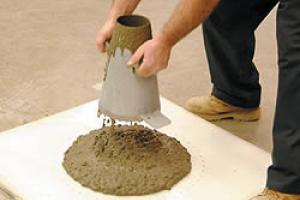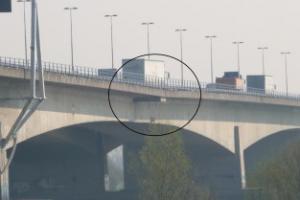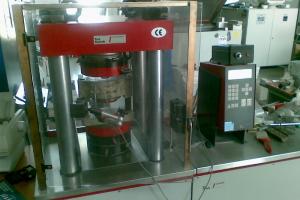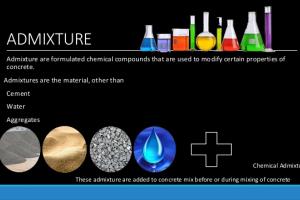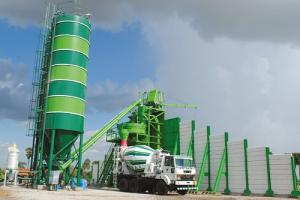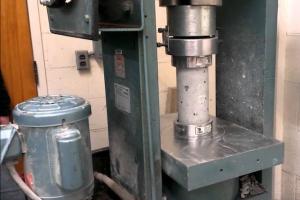Roller Compacted Concrete - Making, Testing and Advantages
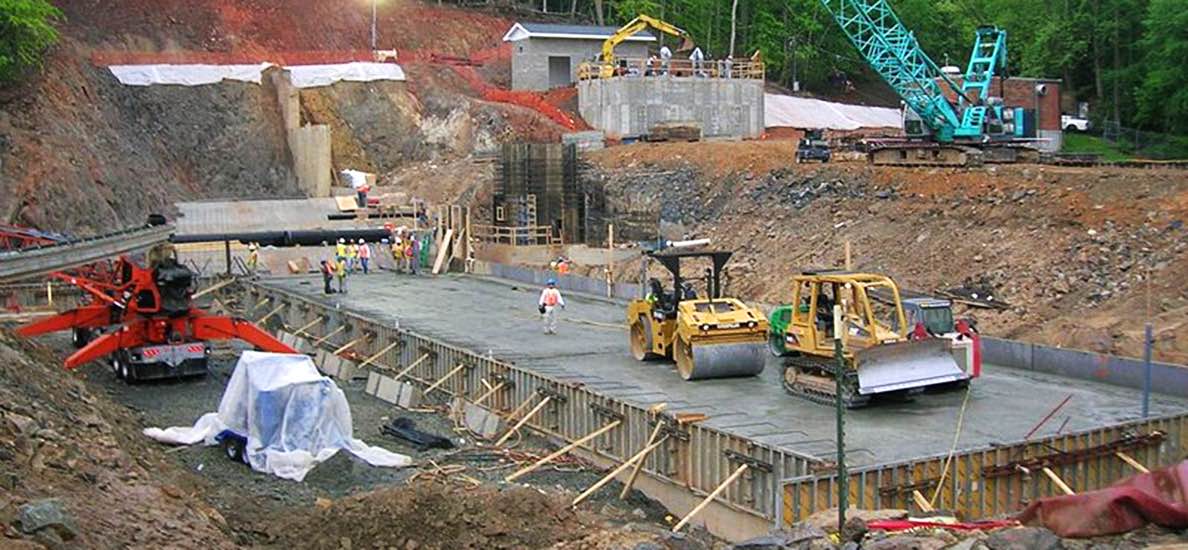
Concept and Significance
The development of Roller Compacted Concrete (RCC) caused a major shift in the construction practice of mass concrete dams and locks. The traditional method of placing, compacting, and consolidating mass concrete is at best a slow process. Improvements in earth-moving equipment made the construction of earth and rock-filled dams speedier and, therefore, more cost-effective.
Early Developments - History
The first successful application of RCC technology was demonstrated in 1974. The repair of the collapsed intake tunnel of Tarbela Dam proved that the material had more than adequate strength and durability. The maximum placement of 18,000 m3 of RCC in one day, which is still the world’s record, was a clear evidence of the potential of this new construction method.

Definition
ACI 207.5R-89 defines roller compacted concrete (RCC) as concrete compacted by roller compaction. The concrete mixture in its unhardened state must support a roller while being compacted. Thus RCC differs from conventional concrete principally in its consistency requirement. For effective consolidation, the concrete mixture must be dry enough to prevent sinking of the vibratory roller equipment but wet enough to permit adequate distribution of the binder mortar in concrete during the mixing and vibratory compaction operations.
Advantages of Roller Concrete
- By 1997, 150 projects using RCC, including 46 new dams, were completed in the United States.
- The U.S. Army Corps of Engineers list the following advantages of using RCC.
- Costs: Depending on the complexity of the structure, RCC costs 25 to 50% less than conventional concrete.
- Rapid Construction: For large projects, RCC dams can be finished 1 to 2 years earlier compared to regular mass concrete dams.
- Spillways: Compared to embankment dams which normally require that spillways be constructed in an abutment, RCC dams offer the attractive and cost-effective alternative of constructing the spillway in the main structure of the dam.
Expertise required:
- Cement consumption is lower because much leaner concrete mixtures can be used.
- Form work costs are lower because of the layer placement method.
- Pipe cooling is unnecessary because of the low temperature rise.
- Cost of transporting, placement, and compaction of concrete is lower, because concrete can be hauled by end dump trucks; spread by bulldozers and compacted by vibratory rollers.
Construction Practice
- The overall planning of a Reinforced Cement Concrete dam is conceptually different from a gravity dam. To minimize thermal stresses, traditional mass concrete is built in separate, monolith blocks.
- This process is slow but allows great flexibility; if a problem develops in one of the blocks, the construction front moves to another block. RCC dams do not have such luxury.
- The operation is continuous, building one horizontal lift at a time.
- There are no special requirements for batching and mixing of RCC which can be produced using the same equipment as for conventional mass concrete.
- Ready-mixed concrete trucks cannot be used to transport RCC because the zero-slump concrete is too dry and cannot be discharged.
- To obtain significant economical benefits, special care must be taken in the selection of equipment and construction methods for fast placement and consolidation of RCC. Conveyor systems can be an efficient method of transporting RCC.
- The success of a RCC dam is often contingent on the correct selection of lift thickness, which depends on the mixture proportions and on the equipment available.
- If the lift is too thin, the placement rates will be small, thereby reducing the advantages of using RCC.
- If the lift is too thick, the compaction will not be adequate, creating horizontal layers of higher porosity, thereby compromising the strength and durability of the structure.
- Normally, the thickness of the lifts ranges from 0.15 to 0.90 m; in the U.S. a lift thickness of 0.3 m is often used.
- Compaction of the lift is achieved by using a vibrating steel-wheel roller.
- Compaction of the lift should be performed as soon as possible, typically within 10 minutes after spreading and no more than 40 minutes after mixing.
- Once adequate compaction is achieved, good curing conditions for the finished surface are essential; the surface should be kept in a moistened condition until the next lift is placed.
- The dry consistency of RCC results in difficulty in bonding fresh concrete to hardened concrete.
- This bond can be improved between the lifts by reducing the time of casting the lifts or by increasing the paste content in the mixture.
- Typically, bedding mixtures contain 360 to 460 kg/m3 of cement, 170 to 220 kg/m3 of fly ash, and 4.75-mm maximum size aggregate.
Laboratory Testing
RCC is a zero-slump concrete whose properties are strongly dependent on the mixture proportions and on the quality of compaction. Concrete is consolidated in the field using vibrating rollers. Despite extensive research on this subject, there is as yet no unanimously accepted methodology to simulate the field condition in preparing laboratory samples.



